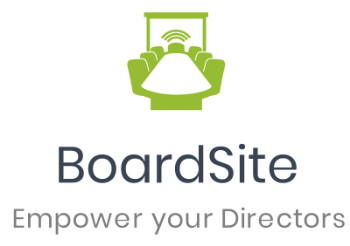Bringing new people onto your board isn’t just about filling a position. It’s about helping someone feel ready, informed, and confident in their new role. Whether you’re part of a nonprofit, startup, or community organization, a solid onboarding process helps a new board member understand their responsibilities, feel welcome, and get involved quickly. A structured board orientation is crucial in helping new board members feel welcomed and prepared.
If you don’t take the time to do it right, new members can feel lost or unsure of how to contribute. But with the right approach, they can start making meaningful contributions from day one. Sharing the organization’s mission with new board members helps them integrate into the nonprofit’s culture and provides essential context for their roles and responsibilities.
Board Member Onboarding
Onboarding new board members is a critical process for nonprofits to ensure their success. A well-planned onboarding process helps new board members understand their roles and responsibilities, become familiar with the organization’s mission and operations, and build relationships with fellow board members and key staff. Effective board member onboarding sets the tone for a positive and productive experience, enabling new board members to contribute to the organization’s mission and goals from the very beginning. By providing a comprehensive onboarding experience, nonprofits can ensure that their board members are equipped to make informed decisions, provide strategic guidance, and support the organization’s growth and development.
Recruiting and Selecting Board Members
Recruiting and selecting the right board members is essential for a nonprofit’s success. A strong board composition includes individuals with diverse skills, expertise, and perspectives, who are passionate about the organization’s mission and committed to its goals. The recruitment process should involve a thorough search, considering candidates from various networks, including current board members, staff, volunteers, and community leaders. The selection process should be based on clear criteria, including the candidate’s skills, experience, and fit with the organization’s needs and culture. By recruiting and selecting the right board members, nonprofits can build a strong and effective board that provides strategic leadership and guidance.

Why Onboarding Is So Important
New board members often join with excitement and a strong desire to help. But that energy can fade quickly if they’re not given the right tools or information. Onboarding helps bridge the gap between wanting to help and actually being able to help by ensuring everyone is on the same page.
It gives new members:
- A clear understanding of what the board does and how it works
- Information about the organization’s goals and challenges
- Confidence to speak up and participate in meetings
- A sense of connection with the rest of the team
When you support new members early, they feel more engaged and prepared to contribute in a meaningful way. A well-structured board member orientation that includes comprehensive materials and essential information is crucial to this process.
Steps to Onboard Board Members Successfully
You don’t need to build an overly complicated process. Here are the most important steps to include:
1. Welcome Them Before the First Meeting
Before their first board meeting, send new members a welcome package. Include helpful documents like:
- A board handbook or your organization’s bylaws
- Recent board meeting minutes and financial updates
- A copy of the strategic plan
- Key contacts and an outline of upcoming meetings
Providing new board members with comprehensive past information during the onboarding process is crucial to ensure they are well-informed and can engage effectively from the start.
If you’re using BoardSite, these documents would be uploaded in a shared folder so everything’s in one place.
Additionally, consider engaging new board members during an initial meeting to foster team integration and ensure they feel welcomed.
2. Pair Them With a Mentor or Board Buddy
Having current members they can turn to with questions—especially outside of formal meetings—can be a huge help. A mentor or buddy can explain how meetings usually go, clarify any confusing documents, and offer support as they get settled.
3. Host an Orientation Session
A board orientation session is a great way to bring new members up to speed. It doesn’t have to be long or overly formal. Use it to talk about:
- What the board is responsible for
- How decisions are made
- Legal duties like acting in the best interests of the organization
- Your current goals and any major issues the board is working on
The board chair plays a crucial role in facilitating discussions and ensuring effective communication during the orientation session. Encourage questions and give them a chance to meet other board members if they haven’t already.
4. Be Clear About Expectations
Don’t assume new members know what’s expected of them. Be upfront about things like:
- How often the board meets and how meetings are run
- What kind of prep is needed before meetings
- Whether they’ll be asked to join committees and clarify committee assignments, emphasizing the need for clear expectations regarding responsibilities, meeting schedules, and reporting requirements
- Any involvement in fundraising or public events
The more clarity you provide, the more confident they’ll feel taking part. Provide clear documentation regarding board roles as part of the onboarding process to help new members understand their responsibilities and quickly get oriented.

Board Manual and Resources
A board manual is a comprehensive document that provides new board members with essential information about the organization, its mission, and its operations. The manual should include key documents, such as the organization’s bylaws, strategic plan, financial reports, and committee structures. Additionally, the manual should provide an overview of the board’s roles and responsibilities, including expectations for attendance, participation, and communication. By providing a thorough board manual, nonprofits can ensure that their board members have access to all the information they need to make informed decisions and contribute to the organization’s success.
Utilizing Board Management Software
Board management software is a powerful tool that can streamline board processes, enhance communication, and promote accountability. By utilizing board management software, nonprofits can provide their board members with a centralized platform to access key documents, communicate with each other, and track progress. The software can also facilitate online meetings, voting, and decision-making, making it easier for board members to participate and engage. Additionally, board management software can help nonprofits maintain accurate records, ensure compliance, and reduce administrative burdens. By leveraging board management software, nonprofits can improve their board’s effectiveness and efficiency, ultimately supporting their mission and goals.
Effective Board Meetings
Effective board meetings are essential for a nonprofit’s success. A well-planned meeting agenda should include key topics, such as financial reports, program updates, and strategic discussions. The meeting should be facilitated by a skilled chair, who ensures that all board members have an opportunity to participate and contribute. Additionally, the meeting should include time for questions, discussion, and decision-making, ensuring that all board members are informed and aligned. By conducting effective board meetings, nonprofits can ensure that their board is engaged, informed, and able to make strategic decisions that support the organization’s mission and goals.
Keep the Learning Going
Training shouldn’t end after orientation. Even experienced board members need regular updates to stay informed and effective. Consider:
- Hosting annual retreats or workshops
- Inviting guest speakers to share updates on legal or financial topics
- Offering recorded webinars or self-guided learning
- Giving access to past board documents for context
Simplifying the onboarding process can significantly reduce the learning curve for new board members, allowing them to quickly adapt and effectively fulfill their roles.
With BoardSite, create a central place for ongoing training, making it easier for everyone to stay informed. Using a board solution can streamline the onboarding process and provide easy access to essential documents and resources.
Create a Simple, Repeatable Training Program
You don’t need to reinvent the wheel. A basic training program that you can use for each new member might include:
- A checklist of what to send and cover during onboarding
- A short orientation session
- A dedicated new board member orientation to provide essential information about the organization’s mission, expectations, and roles
- Regular learning opportunities, like quarterly updates or annual workshops
- Reminders to review key policies and responsibilities each year
This helps keep everyone aligned and makes onboarding smoother for future board members too. Many organizations create conflict of interest policies and recruitment plans to clarify the roles and responsibilities of new board members.
Setting Your Board Up for Success
When new members are properly onboarded and supported, they’re more likely to participate fully and contribute their unique skills. Starting the onboarding process on the right foot ensures that new members feel welcomed and engaged from the outset. And when all board members feel confident and informed, your board becomes a stronger, more effective group.
Helping new members get started with the right information and support isn’t just helpful—it’s essential. It builds a team that works well together and makes decisions that move your organization forward. Providing new board members with essential information enables them to hit the ground running, preventing them from feeling lost and overwhelmed.
Ready to Make Onboarding Easier?
If you’re looking for a better way to organize your board materials and simplify the onboarding process for new board members, board software like BoardSite can help. From secure document sharing to easy meeting planning, BoardSite keeps everything in one place so your board can stay focused and effective.

